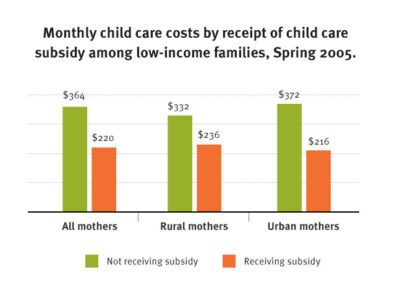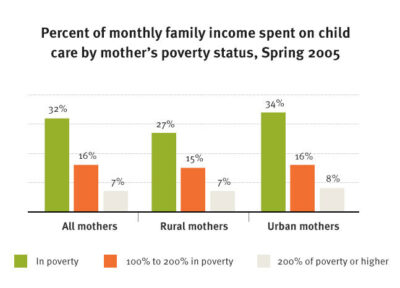Different Settings; Same Need
Child care is a considerable expense for poor and low-income working families regardless of where they live. As a result, child care subsidies are an important — and even essential — work support for many low-income families.










